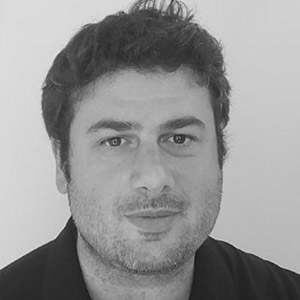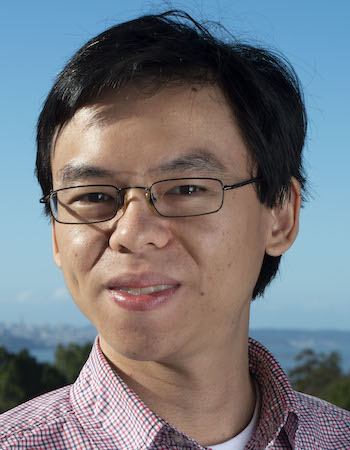Researchers from LLNL, Lawrence Berkeley National Laboratory (LBL) and SLAC National Accelerator Laboratory (SLAC) are using an experiment–theory approach to develop open-source software that will facilitate fundamental advances in materials science.
Learn more by exploring the topics below.
Overview
Functional materials for cutting-edge technology
Functional materials—materials that respond to external stimuli such as voltages, light, and magnetic fields to provide a useful function—are an important aspect of developing cutting-edge technologies. A key focus area within materials science is designing, synthesizing, and characterizing these materials to take full advantage of their capabilities. However, experiments testing the materials’ reactions to strong stimuli often produce complex and convoluted data, making it difficult to fully understand the meaning of the results. Additional capabilities enabling direct control of the functional properties of materials in extreme conditions—and thus addressing the complex data—could ultimately transform materials science research and directly benefit future technologies.
Taking an experiment–theory approach to materials characterization
Advances in high-performance computing (HPC) have provided a platform to perform theoretical modeling at large scales and complexity using density functional theory and quantum molecular dynamics. Researchers then use these models to guide their experiments, taking advantage of advances in experimental techniques to analyze materials and confirm the theories.
This experiment–theory approach has guided the development of the multi-disciplinary Center for Non-Perturbative Studies of Functional Materials under Non-Equilibrium Conditions (NPNEQ). The center will focus on the development of scalable software, optimized for state-of-the-art HPC systems, to help interpret complex experimental data. Specifically, the software supports ab initio, non-perturbative studies of functional materials far from equilibrium, enabling predictive simulations to drive fundamental advances in areas such as non-equilibrium quantum materials, attosecond strong-field physics, and warm dense matter.
Center highlights
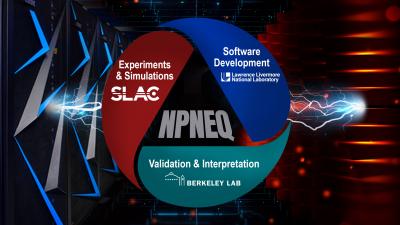
Led by LLNL, the center combines the institutional resources and scientific expertise of three national laboratories. Each national laboratory brings unique, but complimentary, expertise and resources to the project:
- Researchers from LLNL, an internationally recognized leader in HPC architecture and software design, will leverage their expertise and LLNL’s supercomputing facilities to develop time-dependent density functional theory (TDDFT) software for exascale HPC.
- Researchers from SLAC, home of the Linac Coherent Light Source, will harness their cutting-edge experimental and theory programs in ultrafast materials science to design and run ultrafast experiments and TDDFT simulations.
- Researchers from LBL will validate the software and interpret the experimental results at one of the world’s premier nanoscience research institutions, the Molecular Foundry.
The synergistic effort provides avenues for software development and feedback, software validation and feedback, and experimental result interpretation, facilitating continual software improvement.
Objectives
The project’s key objectives are to:
- Augment and exploit the capabilities of the Qbox code to gain deep insights into factors that go beyond the perturbative description, and use those insights to enable applications of non-adiabatic electron-ion(-spin) coupled phenomena.
- Harness the Department of Energy’s (DOE’s) HPC systems and the supporting libraries developed by LLNL supercomputer centers—such as RAJA, Umpire, and CHAI—to more directly compare ultrafast experiments conducted at SLAC with simulations run on current and future HPC architectures.
- Computationally model quantitative and non-perturbative response of functional materials in realistic configurations under non-equilibrium conditions.
People
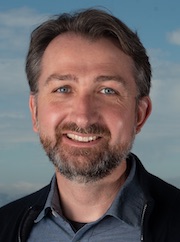
Validation Manager
LBL
dgprendergast [at] lbl.gov (dgprendergast[at]lbl[dot]gov)
510-486-4948
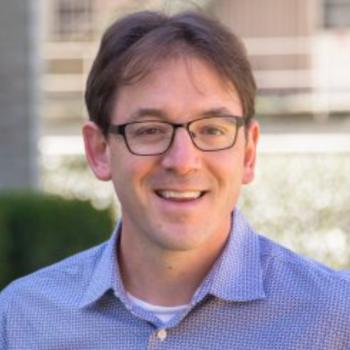
Science Manager
SLAC/Stanford
aaronl [at] stanford.edu (aaronl[at]stanford[dot]edu)
650-926-4558
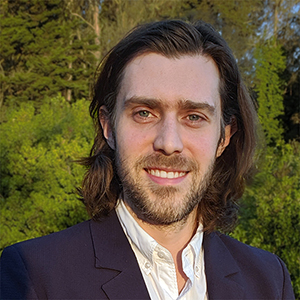
Principal Investigator
SLAC
jornada [at] stanford.edu (jornada[at]stanford[dot]edu)
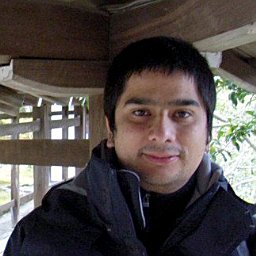
Xavier Andrade
Principal Investigator
LLNL
xavier [at] llnl.gov (xavier[at]llnl[dot]gov)
925-423-7293
Advisory Committee
Emilio Artacho
Professor, Clare Hall Fellow
Cambridge University
Roberto Car
Professor
Princeton University
Stephen Fahy
Professor
University College Cork
Matthew Foulkes
Professor
Imperial College London
Jorge Kohanoff
Professor
Atomistic Simulation Centre
Kazuhiro Yabana
Professor
University of Tsukuba
Department of Energy Program Managers
Dr. James Davenport and Dr. Matthias Graf
Program Managers, Theoretical Condensed Matter Physics
Division of Materials Sciences and Engineering, DOE Office of Basic Energy Sciences
News
Team members participate in initiative workshop
Doctors Das Pemmeraju and Xavier Andrade participated in the online US–Africa initiative workshop on June 18, 2021, and introduced the NPNEQ center and its RT-TDDFT software, INQ.
Software development meeting
The team held a software development meeting on May 25, 2021. During the meeting, Professor Carsten Ullrich from the University of Missouri gave a presentation about his TDDFT research.
Eleventh meeting held
The NPNEQ team held an all-hands meeting on January 28, 2021. During the meeting, Professor Kazuhiro Yabana from the University of Tsukuba gave a presentation on his TDDFT software development and scientific research using the state-of-the-art high-performance computing systems in Japan.
Tenth meeting held
The NPNEQ team held an all-hands meeting on December 14, 2020. During the meeting, the team reviewed ongoing software development and scientific research activities in detail and revised their strategy and priorities.
Ninth meeting held virtually
The NPNEQ team held a virtual all-hands meeting on October 16, 2020. During the meeting:
- Dr. Jack Deslippe of NERSC gave a presentation about GPU optimization of Berkeley GW code.
- Dr. Xavier Andrade gave presentation about GPU + MPI optimization of INQ TDDFT Mini-APP.
Center presentation given at workshop
Dr. Alfredo Correa gave a presentation on the NPNEQ DOE Software center and the INQ software development at the 2020 LCLS Users Workshop on October 6, 2020.
Eighth meeting held virtually
The NPNEQ team held a virtual all-hands meeting on August 25, 2020. During the meeting, Drs. Alfredo Correa and Xavier Andrade announced a major milestone achievement: mini-APP (TDDFT code with minimum functionality for debugging and optimization) with MPI + GPU. The software development effort will shift to GPU + MPI performance optimization for Lassen (LLNL) and Cori (NERSC) HCP systems.
Seventh meeting held virtually
The NPNEQ team held a virtual all-hands meeting on July 2, 2020. During the meeting, the INQ development status was reported by Drs. Alfredo Correa and Xavier Andrade. The alpha-version of INQ programmers guide wiki page was released.
Center overview and tutorial provided at virtual conference
Drs. Correa, Andrade, and Ogitsu provided a presentation on the NPNEQ center and a tutorial of INQ TDDFT Mini-APP at the virtual Electronic Structure Workshop held on June 3–5, 2020. The viewgraphs and a recording of the tutorial are available online at https://physics.ucmerced.edu/electronic-structure-workshop/.
Sixth meeting held virtually
The NPNEQ team held a virtual all-hands meeting on May 18, 2020. During the meeting, Dr. Nuri Yazdani of ETHZ/Stanford gave a presentation on the ultrafast experimental results on perovskites. The team discussed a possible computational study.
Fifth meeting held virtually
The NPNEQ team planned to hold a fifth in-person meeting in March 2020; however, due to outbreak of COVID-19, it was switched to an all-hands virtual meeting held on April 6th, 2020. During the meeting:
- Prof. David Strubbe of the University of California, Merced gave a presentation on TDDFT application to shock physics.
- Drs. Alfredo Correa and Xavier Andrade gave a presentation on the INQ software development plan and the current status.
APS meeting presentation available online
The American Physical Society (APS) meeting in March was canceled due to the COVID-19 outbreak. Dr. Ogitsu’s scheduled presentation is available to view online at https://absuploads.aps.org/presentation.cfm?pid=15708.
Fourth in-person meeting held at TMF/LBNL
The NPNEQ team held an in-person meeting on January 30, 2020. During the meeting:
- Prof. Francois Gygi of the University of California, Davis, the original developer of the scalable plane-wave DFT code, gave a presentation on the Qbox development plan under the MICCoM DOE software center.
- NPNEQ presented out the INQ software development plan and discussed future collaboration between Qbox and INQ development.
Third in-person meeting held at SLAC
The NPNEQ team held an in-person meeting on December 12, 2019. During the meeting:
- Drs. Jun Xao and Aditya Sood, PDs of Prof. Aaron Lindenberg presented their ultrafast experimental results and the future theory-experiments collaboration strategy was discussed.
- Prof. Yuan Ping of U. C. Santa Cruz gave a presentation on her software development project about quantum spin dynamics based on density matrix approach.
- Drs. Alfredo Correa and Xavier Andrade presented the INQ library development strategy.
Second in-person meeting held at LBNL
The NPNEQ team held an in-person meeting on November 6, 2019. Discussion regarding the fast exact-exchange GPU implementation was held between NPNEQ members and Prof. Lin Lin of the University of California, Berkeley.

NPNEQ holds kickoff meeting
The NPNEQ team held a kickoff meeting on October 11, 2019, at the Livermore Valley Open Campus.
Publications
- S. Rajpurohit, C.D. Pemmeraju, T. Ogitsu, and L.Z. Tan, A non- perturbative study of bulk photovoltaic effect enhanced by an optically induced phase transition, Phys. Rev. B 105, 094307 (2022).
- T.J. Smart, H. Takenaka, T.A. Pham, L.Z. Tan, J.Z. Zhang, T. Ogitsu, and Y. Ping, Enhancing Defect Tolerance with Ligands at the Surface of Lead Halide Perovskites, J. Phys. Chem. Lett. 12, 6299 (2021).
- M.-F. Lin, N. Singh, S. Liang, M. Mo, P. Nunes, K. Ledbetter, J. Yang, M. Kozina, S. Weathersby, X. Shen, A. Cordones-Hahn, T. Wolf, K. Gaffney, C.D. Pemmaraju, M. Ihme, X. Wang, Imaging the solvated hydronium cation and hydroxyl radical in the ionized liquid water, Science 374, 92 (2021).
- X. Andrade, C.D. Pemmaraju, A. Kartsev, L.Z. Tan, S. Rajpurohit, J. Xiao, A. Lindenberg, T. Ogitsu, and A. Correa, INQ, a modern GPU-accelerated computational framework for (time-dependent) density functional theory, J. Chem. Theor. Comp. 17, 7447 (2021).
- J. Kohanoff, A. Correa, G. Gribakin, C. Johnston, A. Saul, Radioactive decay of 60Sr in cement: a non-equilibrium first-principles investigation, Euro. Phys. J. 75, 1 (2021).
- K.M. Siddiqui, D.B. Durham, F. Cropp, C. Ophus, S. Rajpurohit, Y. Zhu, J.D. Carlström, C. Stavrakas, Z. Mao, A. Raja, P. Musumeci, L.Z. Tan, A.M. Minor, D. Filippetto, and R.A. Kaindl, Ultrafast optical melting of trimer superstructure in layered 1T'-TaTe2, Comm. Phys. 4, 152 (2021).
- E.J. Sie, C.M. Nyby, C.D. Pemmaraju, C.A.C. Garcia, Y. Wang, B. Guzelturk, C.Xia, J. Xiao, A. Poletayev, B.K. Ofori-Okai, M.C. Hoffmann, S.J. Park, X. Shen, J. Yang, R. Li, A.H. Reid, S. Weathersby, P. Muscher, N. Finney, D. Rhodes, L. Balicas, J. Hone, W. Chueh, T.P. Devereaux, P. Narang, T.F. Heinz, X. Wang, A.M. Lindenberg, Ultrathin Terahertz Waveplate Using an Anisotropic Semimetal (2021).
- J. Xiao, Y. Wang, H. Wang, C.D. Pemmaraju, S. Wang, P. Muscher, E.J. Sie, C.M. Nyby, T.P. Devereaux, X. Qian, X. Zhang, and Aaron M. Lindenberg, Berry curvature memory through electrically driven stacking transitions, Nature Physics 16, 1028 (2020).
- E.E. Quashie, R. Ullah, X. Andrade, and A. Correa, Effect of chemical disorder on the electronic stopping of solid solution alloys, Acta Materialla 196, 576 (2020).
- L. McClintock, R. Xiao, Y. Hou, C. Gibson, H.C. Travaglini, D. Abramovitch, L.Z. Tan, R.T. Senger, Y. Fu, S. Jin, and D. Yu, Temperature and gate dependence of carrier diffusion in single crystal methylammonium lead iodide perovskite microstructures, J. Phys. Chem. Lett. 11, 1000 (2020).
- S. Rajpurohit, L.Z. Tan, C. Jooss, P.E. Blöchl, Ultrafast spin-nematic and ferroelectric phase transitions induced by femto-second light pulses, Phys. Rev. B 102, 174430 (2020).
Related Links
Browse other software center websites:
- Materials Genome Innovation for Computational Software
- Midwest Integrated Center for Computational Materials
- Center for Predictive Simulation of Functional Materials
- Chemistry in Solution and at Interfaces
- Center for Computational Study of Excited-State Phenomena in Energy Materials
- Center for Computational Material Spectroscopy and Design

